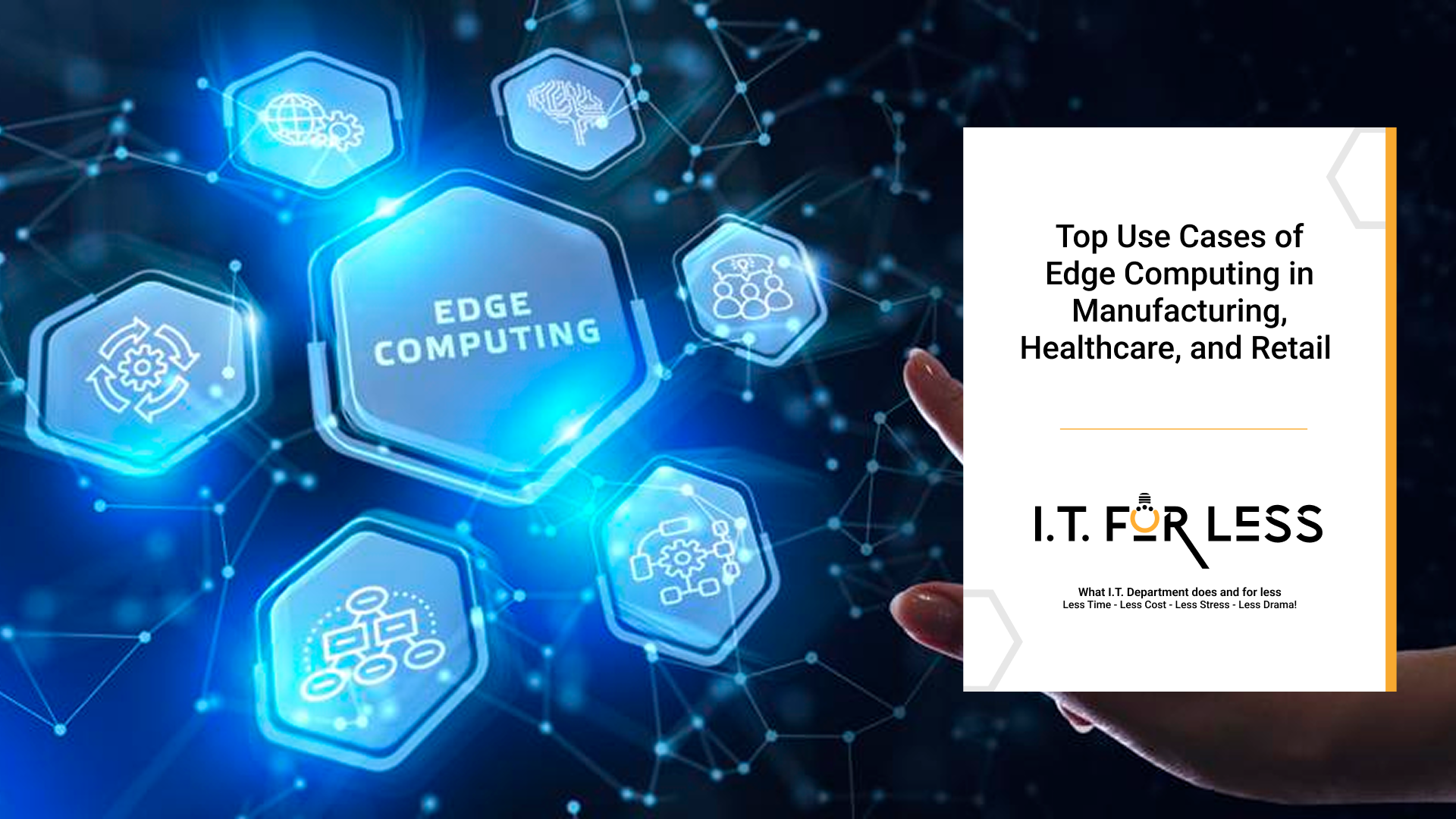As organizations across industries continue their digital transformation journeys, edge computing has emerged as a game-changing technology. By bringing data processing closer to the source, edge computing reduces latency, enhances reliability, and enables real-time decision-making.
Let’s explore how manufacturing, healthcare, and retail are using edge computing to drive innovation, efficiency, and better customer experiences.
Edge Computing in Manufacturing
1. Real-Time Quality Control
In modern factories, even milliseconds matter. Edge computing enables machine vision systems to analyze production data locally, detecting defects instantly rather than waiting for cloud-based analysis. This ensures faster feedback loops and reduces waste.
2. Predictive Maintenance
By processing sensor data at the edge, manufacturers can predict equipment failures before they occur. This minimizes downtime, optimizes maintenance schedules, and extends the lifespan of critical assets.
3. Industrial Automation and Robotics
Edge technology supports low-latency communication for autonomous robots and connected machinery, enabling synchronized operations, precise motion control, and improved safety on the production floor.
Edge Computing in Healthcare
1. Remote Patient Monitoring
Wearables and connected medical devices generate large amounts of real-time health data. Processing that data locally ensures instant alerts for critical conditions while protecting sensitive patient information.
2. Smart Hospitals
Edge-enabled systems help hospitals manage connected medical equipment, optimize energy usage, and streamline patient flow — all without relying on constant cloud connectivity.
3. Medical Imaging and Diagnostics
Edge computing accelerates AI-powered imaging analysis, allowing clinicians to make faster diagnoses even in bandwidth-limited environments such as rural clinics or emergency vehicles.
Edge Computing in Retail
1. Personalized In-Store Experiences
Retailers use edge devices to analyze customer behavior, inventory levels, and environmental data in real time — enabling personalized promotions, dynamic pricing, and smarter product placement.
2. Intelligent Inventory and Supply Chain Management
Edge systems can track inventory through sensors and smart shelves, reducing stockouts and improving replenishment efficiency. Real-time visibility helps retailers respond instantly to demand changes.
3. Checkout and Payment Optimization
Edge technology powers computer vision checkout systems, fraud detection, and queue management, ensuring faster, more secure customer transactions.
The Bigger Picture: Edge + Cloud = Smarter Business
Edge computing doesn’t replace the cloud — it complements it. While the cloud remains vital for long-term analytics and large-scale data storage, the edge handles time-sensitive, local processing. This hybrid approach enables businesses to achieve both agility and scalability.
Conclusion
From smart factories to connected hospitals and intelligent retail spaces, edge computing is redefining how industries operate. Organizations that embrace edge technology today are positioning themselves for faster decision-making, improved efficiency, and stronger customer engagement tomorrow.
Partner with I.T. For Less today and take the first step toward building an edge-enabled IT strategy that keeps your business flowing as effortlessly as your ambition.
